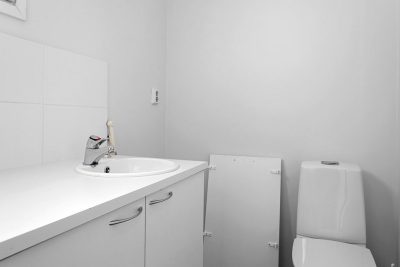Achieving the dream home you envision often requires some level of remodeling. However, many homeowners experience challenges, sometimes leading to more trouble than anticipated. Understanding common pitfalls can save time, money, and stress. From budgeting miscalculations to poor project management, awareness is key. This article explores several typical home remodeling mistakes and offers practical advice to help you navigate the process effectively.

Overlooking Permits and Regulations
Many homeowners jump into remodeling projects without considering local permits and regulations. Skipping this essential step can lead to violations, fines, and the potential need to tear down improperly executed work. Cities and counties typically have zoning laws and safety codes to ensure all projects are completed safely and in accordance with community standards. Researching these requirements can seem tedious, but it’s a necessary part of any remodeling process. Homeowners should consult their local authorities or check resources online to understand what is needed before starting a project. According to the seasoned home remodeling contractors behind Unified Home Remodeling, hiring professionals familiar with the local regulations can provide an additional safeguard against these issues. Taking the time to manage permits and enforcements protects your investment and brings peace of mind.
Neglecting a Realistic Budget
One of the most pervasive mistakes in home remodeling is neglecting to set a realistic budget. Homeowners often underestimate the costs involved, leading to financial strain during the project. A common oversight is not accounting for unexpected expenses like structural repairs or delays due to weather. As a rule of thumb, adding 10 to 20 percent to your budget for these unforeseen costs is wise. Collaborating with local home remodeling contractors is highly beneficial, as they have vast experience handling various project scales and specific budget considerations. By soliciting professional estimates, you can gain a clearer picture of potential costs, keeping your budget in check while avoiding unpleasant surprises later. A well-thought-out budget can help ensure the remodeling process is as smooth as possible, allowing you to focus on the improvements rather than the financial burdens.
Ignoring the Space’s Functionality
When planning a remodel, it’s vital to consider how the space will function in daily life. The aesthetic appeal should never undermine usability. Homeowners may be tempted to prioritize trendy designs over practical layouts, which can lead to regretful choices down the line. For example, a kitchen island may look stunning, but if it constricts workflow, it detracts from the room’s overall purpose. It’s beneficial to envision how your family will use the space and where the most efficient layouts lie. Engaging with an experienced designer or architect can also lend insight into maximizing the function of your rooms while complimenting the new aesthetics. Balancing style with functionality can ultimately enhance your home’s livability.
Rushing the Planning Process
In the excitement of a home makeover, rushing through the planning phase is easy. However, hastily made decisions can lead to regret and costly revisions. It’s essential to thoroughly plan each remodel aspect, from color schemes to material choices, ensuring they align with your overall vision and lifestyle. Setting aside adequate time for decisions can lead to better outcomes and satisfaction with the space. Moreover, utilizing mood boards or coordinating with design software can assist in visualizing what elements work best together. This phase also serves an essential purpose by allowing adjustments based on budget considerations or logistical constraints. Embracing patience in planning time will ultimately affect the entire project’s success.
Compromising on Quality for Cost Savings
While sticking to a budget is essential, compromising quality to save money can lead to long-term dissatisfaction. Purchasing cheaper materials or opting for inferior craftsmanship may save money initially but often results in higher costs for repairs or replacements in the future. Investing in durable materials not only enhances the appearance of your home but also pays off in longevity and durability. Keep in mind that some costs are worth incurring to avoid future problems. Researching and selecting quality products can provide better performance and aesthetics, elevating your space in the long run. The balance between cost and quality may lean slightly toward spending more, but the rewards are typically greater when investing adequately. Wise choices today can lead to a home environment that has served you better for years.
Ignoring a Contingency Plan
Even with thorough planning, the unexpected often occurs during home remodeling projects. Ignoring to formulate a contingency plan can lead to anxiety and stress when issues arise. This may include delays, budget overages, or hidden problems revealed throughout the process. A well-thought-out backup plan can mitigate these shocks, allowing for a smoother transition during a remodel. It’s advisable to allocate resources for emergencies, whether financially or by designating time buffers throughout the project timeline. These provisions help you stay grounded despite any obstacles. Moreover, communicating this to your contractors ensures everyone involved is prepared for possible adjustments or changes. A thoughtful contingency plan is essential for maintaining control over remodeling and protecting your home investment.

While many of these mistakes stem from passion and excitement for home improvement, being mindful of potential pitfalls can significantly ease the process. Learning from these common mistakes will empower homeowners to proceed more thoughtfully. Effective communication with professionals, realistic budgets, planning contingencies, and prioritizing functionality over aesthetics contribute to successful home remodeling. Awareness is half the battle; taking measured steps can elevate the overall experience.








